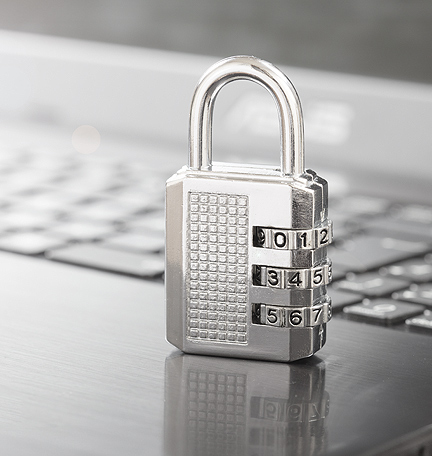Start building resilience into your business model.
When the pandemic struck at the start of 2020, it sent a message to business owners across the globe: You can’t predict what’s going to happen, you can only adapt.
No one wants to think the worst is going to happen, but sometimes, it does.
Over the last year, much of leaderships’ attention has been focused on navigating supply chain disruption, changing customer behavior, and liquidity needs. But remember, during periods of disruption, the most successful companies will do more than manage through the crisis — they’ll also work to protect themselves from the next one.
Companies that have successfully pivoted their business model by connecting with customers remotely or quickly initiating tech changes didn’t stumble into their successes. No matter how “tried and true” your business plan is, you can’t be certain things will go the way you plan. But if you build resiliency into your business model when times are good, it can be easier to adapt when the unexpected happens.
“The speed with which you're able to respond will dictate if you're going to be resilient or not,” says Chris Hurst, Commercial Banking Lead and Market Executive at Regions Bank.
That speed is enabled by contingency planning.
Creating Your Plan
According to Hurst, one of the most effective ways to improve the resilience of your business is through robust contingency planning — the art and science of mapping scenarios and considering everything from business strategy to cash flow to legal and tax risks. A resilient company is one that has positioned for flexibility to address just about any challenge.
A robust contingency plan is broad enough to cover a range of short- and long-term events, yet designed to evolve with the shifting needs of the business. It also must account for any changes in resources. Finally, robust plans include input from a diverse team of internal experts — HR, IT, operations and finance — along with any outside legal or financial advisors who might support your company.
When building a contingency plan, Hurst recommends that company leaders start by considering what impact different crises would have on their business, and how they would respond. While most contingency plans focus on how to deal with a short-term crisis — like a hurricane forcing the business to shut down for several days — it’s equally important to plan for long-term events like pandemics, deep economic recessions, supply chain disruption, or tariffs on your most important raw material. As recent events have shown, while these kinds of occurrences are exceedingly rare, they’re so monumentally disruptive that it’s worth taking the time to plan for them.
Companies also need to consider shareholder expectations, fixed versus variable costs, access to suppliers, and how easily the company could access resources to respond to a crisis. “All of these issues inform the cash flow conversation to think about contingency,” Hurst adds.
Most of these questions can’t be answered by looking at a balance sheet, Hurst says. Robust planning requires “quality accounting and tax planning advisors, consistent legal counsel, and an engaged and consultative banking relationship.” Each of these specialists will have a unique perspective on hurdles you may face in certain situations.
Readying Your Team
In times of turmoil, leaders need to be able to rely on their entire workforce. To help accomplish that, it’s important to create a culture where employees are trained and empowered to respond to shifting needs.
“You can’t become resilient during a crisis,” Hurst notes. “It’s something that has to be embedded in the culture and leadership of the company so that employees know how to respond when a crisis occurs.”
In general, resilient companies recognize that people are their most valuable asset, and they invest in them accordingly, he says. That means offering competitive salaries, providing training and mentoring opportunities, and giving high performers the chance to move into new roles and take on stretch assignments to build their skills. That might not seem directly related to building a resilience plan, but it creates a more agile workforce that is better able to tackle obstacles as they emerge. “This way, when there are times of stress, you'll have the right people on the team who can emerge as leaders to solve problems quickly.”
Finding Opportunity in Upheaval
Ultimately, the most resilient companies are also adept at finding opportunities in a crisis and having financial strategies that allow them to respond.
“Wherever there is upheaval and risk, there's also opportunity — you’ve just got to keep your head above the waves a little bit and look a little bit farther.” Hurst explains. “If you've positioned your balance sheet and you've got reserves, maybe there are opportunities that you can easily pivot to.”
In the early days of COVID-19, the companies that successfully adapted — like the restaurants that shifted to curbside take-out models overnight and grocers who hired teams of remote delivery shoppers — proved the value of this approach.
However, for many businesses, this might require having enough liquidity, cash flow, and a clear view of your financial standing to be sure you can make it work. “Whether you're a mom-and-pop shop or a publicly-traded company, you can't make good decisions unless you've got current, accurate, actionable information,” Hurst says.
That includes understanding what liquidity means for your business, and how quickly it can be achieved. A company with little leverage, no debt, and healthy margins will require less liquidity than a company that is highly leveraged, relying on razor thin margins, or burning through cash in a high growth phase.
“Cash equals the ability to make moves,” Hurst explains. “If something happens and you've got plenty of cash, you've got the ability to be patient and to make a smart decision on what to do.”
Leaders also need to look beyond the workforce when planning for resiliency and consider who else in their network can be leveraged to support their needs. Hurst notes companies that have strong relationships with their bankers, suppliers, auditors, and regulators have been better able to navigate the pandemic.
When business leaders prioritize contingency planning for an unknown future, resiliency will become an inherent part of the culture.
Explore how Regions can help your business persevere through future disruptions at regions.com/treasurymanagement.











